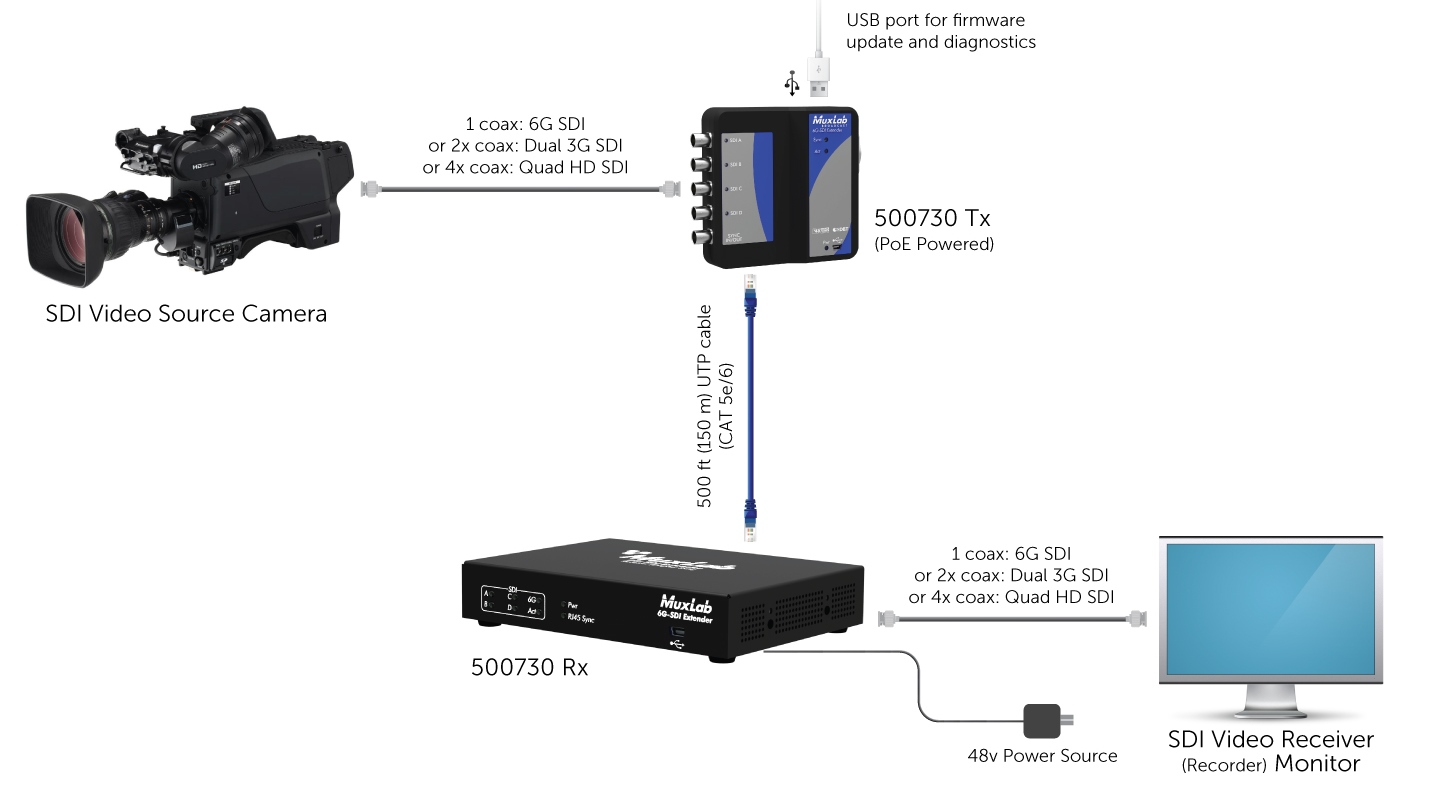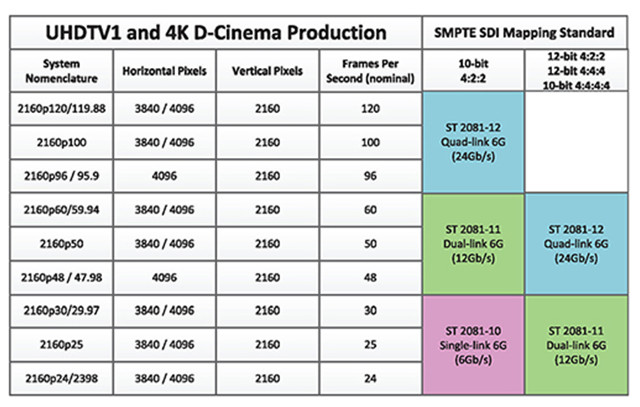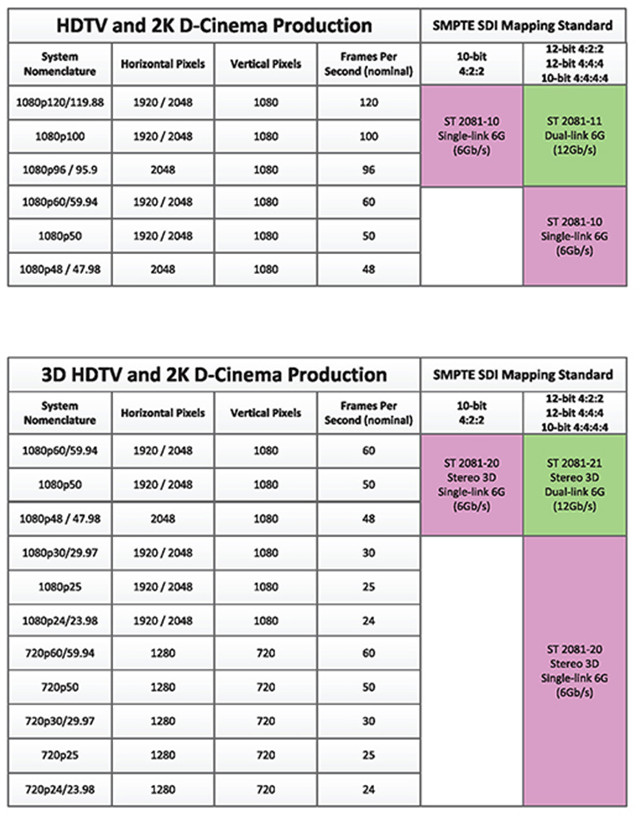Connectivity – Sending a 4K signal from a camera back to a recorder or production truck often involves using fiber optic cable if the distances are fairly long. Now, a Canadian company called Muxlab (Montreal, Canada) has a solution that uses CAT 5/6 cable to transfer the 4K video to a distance of 150 meters. That’s beyond the normal high end for CAT 5/6 of 100 meters.
The set up is shown in the schematic below.

If the camera can support the new (but unapproved) 6G SDI signaling formats, a single coax cable can run between the 4K camera and the Muxlab transmit box (500730 Tx). If the camera supports Dual 3G SDI, then only two coax cables are needed, or four if it only has 3G SDI outputs on the camera.
Inside the 500730 Tx box, the SDI formatted video is reformatted to run over basic UTP (untwisted pair) CAT 5/6 cable. The box is roughly based on the HDBaseT protocol which uses CAT 5/6 cable to send an HDMI formatted signal down the cable. But Muxlab uses a proprietary protocol on the CAT 5/6 cable.
According to Muxlab R&D Manager, Marc Bohbot, “The signaling is based on HDBaseT but the protocol or data format is different than that of the HDMI signal. This is the part that is proprietary”.
At the receive side, the process is reversed to restore the 4K signal for output on 4x3G-SDI, 2xDual 3G SDI or 1x6G SDI. Power to the Tx modules comes from the Rx module and is carried over the CAT 5/6 cable.
Powering the system is an FPGA, which is quite flexible in its ability to be updated with new functionality. That might be necessary as the 6G SDI and 12G SDI standards have not yet been approved by SMPTE, so there could be some unanticipated changes coming. Firmware updates or diagnostics can be facilitated by a USB connection.
Below are some tables from the SMPTE roadmap chart for 6G and 12G SDI. Bohbot says that its system should support any of the modes in the pink squares where single-link 6G is listed (ST 2081-10). This includes the 3D modes, but the company has not yet tested these, admits Bohbot. Other supported modes include SMPTE 292M, SMPTE 296M, SMPTE 372M, SMPTE 424M, and SMPTE 425M. – Chris Chinnock



